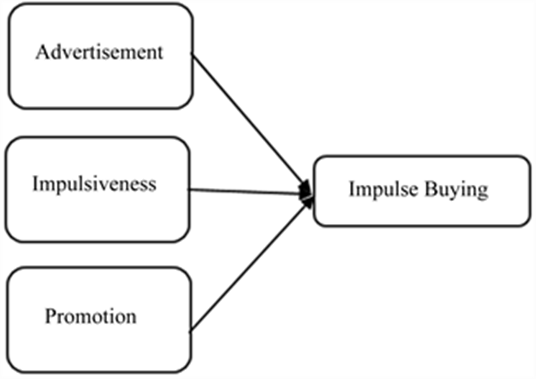The Psychology of Impulse Spending

Impulse spending is the tendency of buyers to purchase goods and services without proper planning. Impulsive buying is not only motivated by the diversity of internal psychological factors but also determined by external circumstances that are related to market enticement and excitement, causing consumers to spend heavily on clothing, shoes, household items, food, and many other things (Naeem, 2020). Most people have experienced the powerful and unexpected emotions in their uncontrollable urge to purchase something immediately, without planning, due to huge discounts on their favorite items either in the grocery store or high-end jewelry shop.
Individual characters and self-identity attributes are the internal sources of impulse spending. Buying objects without planning is mainly influenced by psychological impulses indicating that people with impulsive behaviors are likely to indulge in emotional purchasing. However, other variables are linked with impulse buying and include self-identity (Furnham & Grover, 2021). These are certain beliefs that people hold about individuality and specific shortfalls that they identify about themselves. For example, some individuals buy sophisticated and expensive items, not because of necessity but because they seek attention and feel like other people around them will treat them differently.
Another variable associated with impulse spending is sensation seeking. This is the urge to search for the sensational experiences announced in the novel television commercials and online advertisements. Individuals are willing to run health or financial risk just to have a feeling of what they watch and read, regardless of the variety of risks involved. Impulse buying tendency is another trait connected to emotional purchases (Gamst-Klaussen et al., 2019). This is the process of enticing consumers to act in a particular context which captures the following concept: alluring the buyers' attributes that generate an urge and inspiration for actual impulse spending. Finally, impulsive buying is associated with the availability of resources. Consumers with financial capabilities or high interests are more likely to indulge in impulse purchasing, while consumers with low resources like time and money are less likely to do so.
There are personal norms and motives behind the consumers' impulse buying process, where motivation is the crucial element of internal origin showing objective-directed arousal. These motives create certain beliefs regarding consumption when buyers believe that purchasing items will give them emotional fulfillment and satisfaction to remove negative feelings (Allom et al., 2018). The impulsiveness of consumers may be invoked by norms that influence the impulse purchase decision, which serves as a good or bad indication of impulsive buying behavior.
Many people around the globe are missing their budgets because they do not keep a proper track record of their financial resources. When it comes to budgeting, most individuals tend to forget planning them out well. As finances are a serious challenge for most people, there is a possibility that they avoid assessing the whole picture of their spending behavior. It happens due to fear of what some consumers will find out in such an assessment, while others feel no need to budget. In addition, it is possible that people do not keep a track record of their spending because they do not see the importance of maintaining a budget (Greenberg & Hershfield, 2019). As a result, those individuals end up regretting how much they have spent and how the spending behaviors of other consumers put particular weight on their own.
Without budget planning, most buyers may result in losing track of their spending patterns. The purpose of budgeting is to help individuals identify where their money is going and whether there is room to spend less. Lacking a budget might lead you to make a costly choice (Asebedo & Browning, 2020) and fall short while achieving your savings goals. People, who do not keep a record of their financial resources, have a hard time controlling their spending and setting aside money to save in the bank. As a result, landing in debt could be another consequence of spending more than the budget.
There are various reasons why people are missing their budgets, one of which is expenses that are inconsistent with one's income. It is challenging to record the budget when individuals experience unpredictable income and impulse buying. Another reason that causes the budget to fail is setting unachievable and unrealistic goals. The main objective of budgeting is to cater to financial needs; therefore, it is challenging to expect the budget to address all the budgetary issues. The third reason is a lack of commitment (Fenton-O'Creevy et al., 2018). Most people make inspiring budgets but lose interest in them after a short time due to the difficulty of letting go of some comfort.
There are various solutions to making a financial plan, including setting or having a budget. Individuals must have budgeting that will help track spending. It is crucial to use this budget plan to guide the spending choice and update it when paying bills at any given time in the month (DeWall & Van Tongeren, 2021). The other solution is to track one's spending. To avoid overspending the budget, it is essential to stop buying small purchases here and there that add up quickly.
Another way to keep the budget is by not committing to new bills that recur monthly. It is important to avoid taking unnecessary credit cards and loans from banks that contribute to the monthly bill. In addition, it is vital to ensure paying for the best prices. When shopping, consumers could compare product and services prices to make sure they pay less for everything, searching for cheaper alternatives and discounts. Before indulging in big purchases, it is crucial to assess if the purchase is necessary and to compare the prices. Instead of using credit cards, saving up helps to pay no interest. To avoid unnecessary spending, it is vital to reduce the use of credit cards (Furnham et al., 2022). When an individual goes out of cash, it is easier to use them for payment despite financial constraints. Instead, it is vital to continue contributing regularly to some savings accounts. Adding the money monthly to save helps to build healthy financial habits, as being good with money matters takes time and practice.
Nuvestan helps show people the value of purchases of their missed budgets. It has a game-changing monetary visualization technique that enables individuals to grasp more about their purchases and vest with the cash they have (Krishna et al., 2021). Nuvestan tool provides an innovative solution that allows a person to save despite their financial status and visualize the worth of spending traits and compare the same money if vested in various investment platforms at that time.
Figure 1
Impulse Buying Behavior Diagram


References
Allom,
V., Mullan, B. A., Monds, L., Orbell, S., Hamilton, K., Rebar, A. L., &
Hagger, M. S. (2018). Reflective and impulsive processes underlying saving
behavior and the additional roles of self-control and habit. Journal of
Neuroscience, Psychology, and Economics, 11(3), 135. https://psycnet.apa.org/doi/10.1037/npe0000093
Asebedo,
S. D., & Browning, C. M. (2020). The psychology of portfolio withdrawal
rates. Psychology and Aging, 35(1), 78-90. https://psycnet.apa.org/doi/10.1037/pag0000424
DeWall,
C. N., & Van Tongeren, D. R. (2021). No longer religious, but still
spending money religiously: Religious rituals and community influence consumer
behavior among religious dones. The International Journal for the
Psychology of Religion, 32(1),
53-70. https://doi.org/10.1080/10508619.2020.1871558
Fenton-O'Creevy,
M., Dibb, S., & Furnham, A. (2018). Antecedents and consequences of chronic
impulsive buying: Can impulsive buying be understood as dysfunctional
self-regulation? Psychology & Marketing, 35(3), 175-188.
https://doi.org/10.1002/mar.21078
Grable,
J., & Chatterjee, S. (2022). De
Gruyter handbook of personal finance. Berlin, Boston: De Gruyter. https://doi.org/10.1515/9783110727692
Furnham,
A., Robinson, C., & Grover, S. (2022). Spenders and savers, tightwads and
spendthrifts: Individual correlates of personal ratings of being a spender or a
saver. Journal of Neuroscience, Psychology, and Economics, 15(1), 1-18. https://doi.org/10.1037/npe0000155
Gamst-Klaussen,
T., Steel, P., & Svartdal, F. (2019). Procrastination and personal
finances: Exploring the roles of planning and financial self-efficacy. Frontiers
in Psychology, 10, 775. https://doi.org/10.3389/fpsyg.2019.00775
Greenberg,
A. E., & Hershfield, H. E. (2019). Financial decision making. Consumer
Psychology Review, 2(1), 17-29. https://doi.org/10.1002/arcp.1043
Krishna,
A., Ried, S., & Meixner, M. (2021). State-trait interactions in regulatory
focus determine impulse buying behavior. PLoS ONE, 16(7),
e0253634. https://doi.org/10.1371/journal.pone.0253634
Naeem,
M. (2020). Understanding the customer psychology of impulse buying during
COVID-19 pandemic: Implications for retailers. International Journal of
Retail & Distribution Management, 49(3), 377-393. https://doi.org/10.1108/IJRDM-08-2020-0317
Ibtisam
M. A., & Ghabban F.M. (2021). Impulse buying model for business-to-consumer
e-commerce in Saudi Arabia. IBusiness,
13(2), 22. https://www.scirp.org/html/1-8601612_108450.htm
Meg (2021). Consumer
behavior in marketing. Talkwalker. https://www.talkwalker.com/blog/consumer-behavior-in-marketing
Tags
